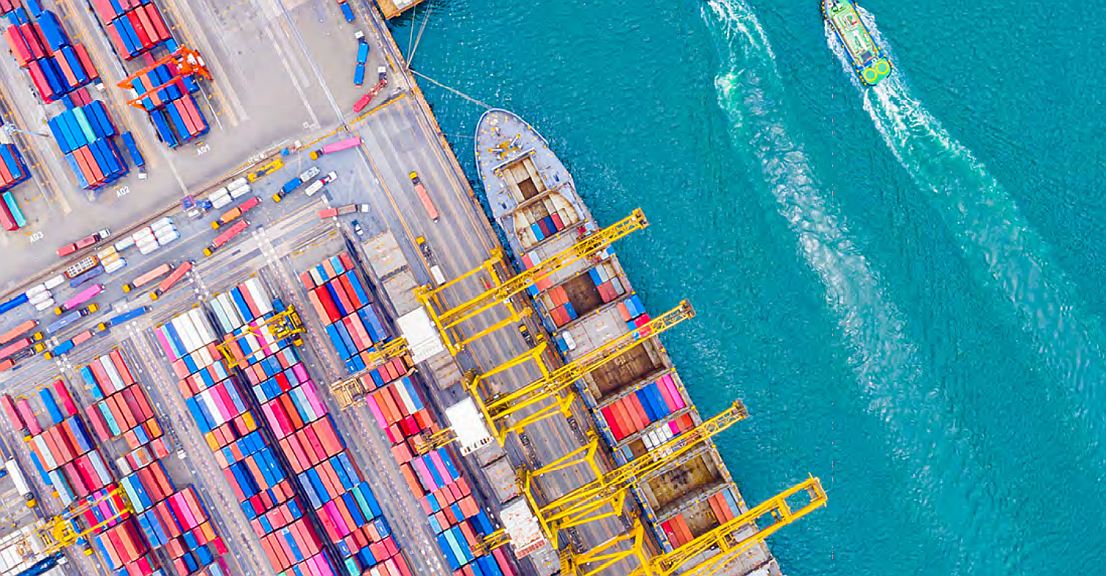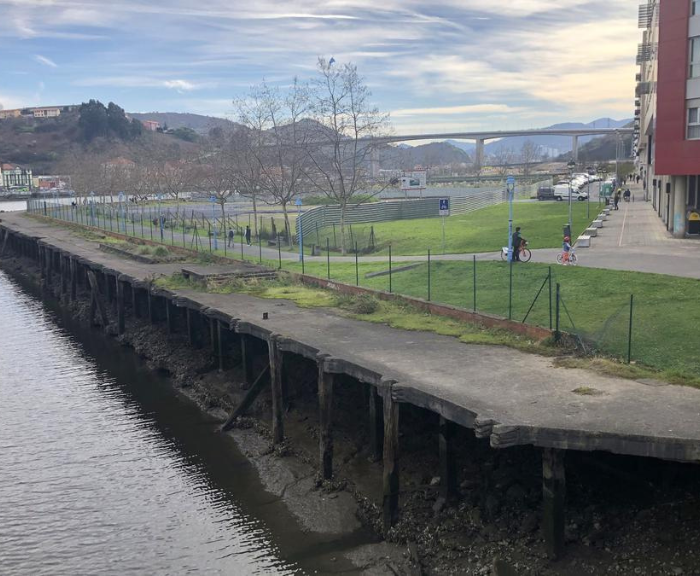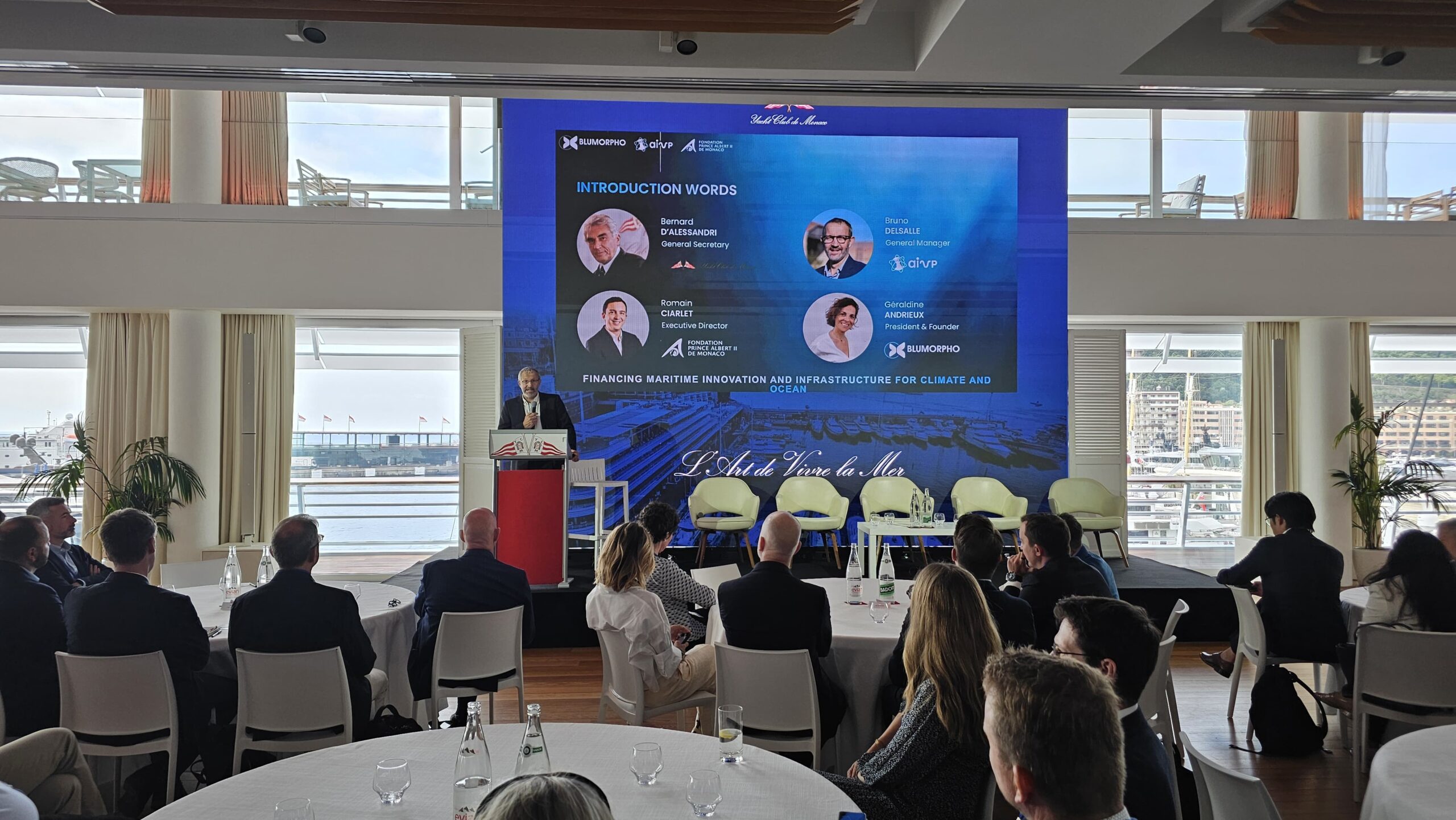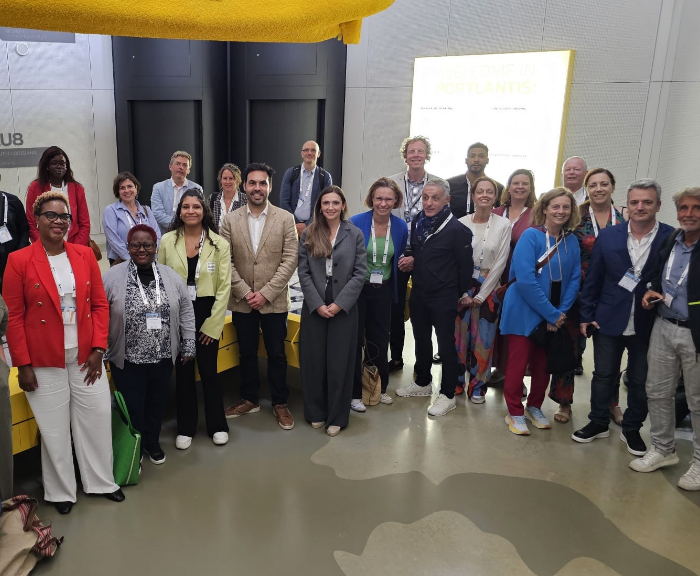Italy was the first European country to suffer the full consequences of the COVID-19. In this article, Tiziana Murgia from Assoporti, Francesca Morucci and Massimiliano Barbera from the North Tyrrhenian Port Authority Network explain the main measures taken in the maritime sector to face this crisis. The authors also reflect on the serious consequences for passenger activities and the role of international organizations in the global response to the corona virus challenge. This English article summarizes the key ideas of a previous Italian one. AIVP key mission is to share relevant knowledge and good practices for Port Cities, with the support of its members and partners, who are of course invited to share their ideas and news.
For the first time in history, cruise ships are not travelling around the world due to the COVID-19 global emergency. However, this is not only thing that has ceased to be as it was. Cities, ports and port life has changed. Logistics is now subject to new and updated safety and health measures which seem at first to have complicated the flow of cargo but are necessary to maintain a safe and secure supply to hospitals, supermarkets and the industries that continue to work for each country.
In the past, the Cruise Industry had had difficult moments, after terrorist attacks and certainly after some serious accidents like the Costa Concordia one. Now the whole system has been affected – shipyards, terminal operators, travel agencies, tourist guides, drivers, suppliers and so on. Today, the crisis has a global reach for this industry as it has been entirely stopped and cannot be considered essential for the country in a pandemic crisis.
According to UNCTAD, 80% of cargo travels via sea and it is therefore essential that National Governments try to facilitate as much as possible the flow of traffic and keep ports fully operational, as these provide goods that are essential for the population and for the health system. Ports and maritime traffic are a substantial part of global economy a connection that ensures stable economies, markets, industries and a large part of the transport of people.
At present, the epidemic state of countries is an uncontrollable variable as has been declared by health authorities and high-level scientific panels. It is therefore possible that the request of essential goods may increase, as well as food and medical needs, and this makes those countries without sea, dependent on the nearby ports to have access to goods.
Restrictions on cargo handling and the blocks on borders could have a negative impact on the novel Coronavirus itself, interrupting the supply of essential goods for hospitals, companies, for citizens themselves. The continuity of international trade is a priority that has been requested by the maritime industry on the whole. It is necessary to safeguard the conditions of health and safety of maritime workers. The restrictions on access to ports and the quarantine measures have had a serious effect of crew members, with an effect on shifts. A priority is also that of containing the risk of the spread of the disease among port workers, that could damage cargo flow especially due to the media communication that would result.
To face this pandemic period, institutions in Italy are moving in an already difficult situation where an emergency can really be devastating. It is important to underline that generally the operational employees are those who pay the highest price of the lack of organization.
Regarding port workers, it is now almost a month in which they are having to adapt to a continuously difficult situation that is changing on a daily basis due to the variable aspects of the virus that remain still unknown even to the high-level scientists. Ports are usually always on the front lines because they have this vital role of shipping and handling goods and people. This new situation in which people have been asked to stay home, changing habits and not having access to many goods directly in shops that are also temporarily closed and/or are not accessible as before due to physical distancing to avoid further spreading of the disease.
Due to this new scenario, the Italian Port Network authorities together have asked the Ministry of Infrastructure and Transport to launch a coordinated task force so that all ports and connected logistic chains function in the same manner and follow the same type of procedures. This emergency has brought together all the presidents of the Port Authorities in the need and prospect of finding the right solutions to all the connected difficulties that ports are facing due to the COVID-19 emergency.
Starting from a list of simple measures enforced both in maritime and port fields in Italy, the article tries to give a detailed outlook on the first month of the crisis in Italy, that has modified work modalities and procedures, which may modify some areas in the future as well. If, as stated in texts, the state of emergency is one of those cases that pushes towards an organization that must be able to adapt itself and transform itself to face the new elements (Morin, 1976) in the case we are facing, this aspect has come to be in all fields.
If workforce today has been modified in all its traditional aspects, the general feeling of resilience and resistance has come through strongly. In particular, Port Authorities have modified regular working shifts, introducing new and technological change that probably would not have done without this emergency. At the same time, operational workforce has been treated with new and revised safety measures to avoid the spreading of the disease.
The Italian Government has issued diverse measures from the 8th of March onwards, with, at first, small area closures in those Regions with the highest number of people with COVID-19, moving on to some travel restrictions, then to a wider closure of the country and finally to a lockdown of all activities excluding food and medicine related activities on the 22nd March.
In summary, the general action includes two kinds of measures:
- Restrictive Actions arising from provisions established to counteract the Coronavirus emergency including those forbidding all people from moving or travelling by public or private means of transport towards a municipality other than the one in which they are located, alongside with further measures for those who enter Italy, except for necessary working needs, absolute emergencies or health reasons.
- Compensative Actions aimed at providing the system with funds and ensuring financial support for specific areas of Public Administration and transport and logistics services, particularly those operating in the maritime sector.
As a result of the Decree of the Council of Ministers (DPCM 10th April 2020) all measures to counter the spread of Coronavirus infection are now extended until May 3rd, 2020.
On a National level, the central Government has collected all the decrees and dispositions in an Act [Testo Unico recante la Raccolta delle disposizioni in materia di contenimento e gestione dell’emergenza epidemiologica da COVID-19 and Testo coordinato delle ordinanze di protezione civile] updated to 24th March by the Prime Minister’s Office.
Below, the most relevant articles:
O.C.D.P.C. n. 630 3rd February 2020 ART. 1, PARAGRAPH 2:
The Head of the Civil Protection Department can ban foreign nationals coming from countries at risk from air, maritime and land national transport.
DECREE-LAW 23rd February 2020, n. 6 ART. 1, PARAGRAPH 2, LETTER M):
Freight and passenger air, maritime and land national transport can be limited or suspended.
DECREE OF PRIME MINISTER 11th March 2020 ART. 5:
The Minister of Infrastructure and Transport in agreement with the Minister of Health can reduce or suspend public transport, maintaining only necessary services.
DECREE-LAW 17th March 2020, n. 18 The Central Government takes extraordinary measures in order to strengthen the National Health Service and provides financial support to families, workers and companies involved in COVID-19 emergency. In particular, below the list of those related to the port maritime sector:
ART. 2, PARAGRAPH 1: Extraordinary staff recruitment by the Department of Health.
ART. 53, PARAGRAPH 1: Export credit in the cruise sector.
ART. 61, PARAGRAPH 2: Suspension of payments for transport operators.
ART. 70, PARAGRAPH 1: Increase of funds allocated to the Customs Agency.
ART. 92, PARAGRAPH 1: Anchorage dues exemption and suspension of port area lease payments.
DECREE OF THE MINISTER OF INFRASTRUCTURE AND TRANSPORT 19th March 2020, n. 125:
Europe and the world in the face of an unprecedented maritime and port crisis
Cruise services for Italian passenger ships are suspended and cruise ships flying a foreign flag are blocked. The effects of this closure have traveled around the globe and many countries, during this period, banned Italian people, goods and crew members from their ports, creating a difficult and confusing situation. Many of the countries that at first banned Italian related goods and people, after a couple of weeks had developed local spread of the disease that today has put them in lockdown similar to the one applied in Italy.
What is now clear is that globally, countries were not prepared to face this type of emergency, mainly due to the fact that many have not considered investments in health and research at the centre of economic growth. Regarding ports, we can see the importance of working together with territories, especially with regards to coordinated actions to save lives and ensure safety of crew and people working in and around ports.
In March 2020 European Maritime Safety Agency-EMSA implemented a detailed list with all the measures taken by the European Governments regarding the maritime and port sector . In the same line, the International Chamber of Shipping-ICS and the International Transport Workers’ Federation-ITF sent an open letter to the G20 leaders in which they propose that governments worldwide come together to identify seaports in their countries, and appropriate airports nearby, from where crew changes could be resumed as soon as possible.
The European Commission, from its side, issued detailed guidelines on repatriating cruise ship passengers and protecting ship crews. The Commission also called on EU Member States to create a network of ports where crew changes can take place without delays, with adequate facilities for seafarers to undertake medical checks, quarantine if required and transport connections onward to their home country.
European Sea Ports Organization-ESPO coordinated a declaration of 33 European maritime and logistic associations sent on 24th March to the European Commission. With the slogan “Transport keeps us going”, recalling the already used one “Transport is essential4all”, ESPO codified several points emphasizing the importance of transport and logistic especially in such a period of crisis, transiting material such as medicines or medical devices.
The International Association of Ports and Harbours-IAPH, from its side, asked the Chamber of Shipping- ICS and the International Maritime Organization-IMO to collaborate to protect the global supply chain from COVID-19 impacts. IAPH also published in the middle of April the first COVID19 Port Economic Impact Barometer, based on the input of 67 ports worldwide. The analysis made by professors Notteboom and Pallis shows that overall port cargo volumes were steady in the last weeks with some dips, and significantly reduced passenger and cruise vessel calls. Dockworker availability has been impacted, but is not hampering operations whereas some ports report cargo build up and congestion at warehouses. At the same time, IAPH established the WPSP COVID19 Task Force which started working on a guidance document. A three-layered approach will be pursued, covering 1) short-term operational measures, 2) medium-term measures to protect the business, including finance and communication, 3) measures to support customers and stakeholders. In addition, it started a reflection process on what the landscape of ports and logistics may look like in post-corona times.
However, passenger activity is the one which is suffering most for the current restrictions: the situation for passenger vessels is continuously worsening following the cancellation of all cruise ship calls and the suspension of ferries ordered by the Ministry at a time when departures are normally intensified. The major Cruise Companies temporarily shut down operations in March and opted for a lay-up solution, meaning a stop in a port with a proper crew onboard maintaining the vessel. At the moment, in Italy 10 ships are moored in lay-up in 8 ports (Savona, Genova, La Spezia, Piombino, Napoli, Civitavecchia, Ancona and Brindisi).
In line with recent Italian directives, all ferries have been suspended till 3rd May, with the exception of pre-authorised services between the Italian peninsula and the major Italian islands (Sardinia and Sicily) and services to maintain the territorial continuity from Piombino to Elba Island, for instance.
The halt to cruise ships has a direct impact on the whole cruise line value chain, from port terminals to ship construction and repairs, ship chandlers, tour and transport operators, tourist guides, leisure attractions, restaurants and shops. According to Francesco Di Cesare, president of the Italian consultancy firm Risposte e Turismo, 2020 will close “in red” for the cruise sector, and its full recovery is not likely to be achieved in 2021, but only in 2022. Regarding ferries, the scenario could be different, due to the recovery of domestic tourism. In any case, although it is too early to know the timing of the recovery of the passengers’ activity and also to estimate the real figures related to the impact of the sector stop in the Italian ports, the cost paid by Italy, and in general by Mediterranean Sea ports, will certainly be high, considering the valuable contribution of cruise and ferry activities to the local economy.
In this sense, other associations bringing together ports, cities and other operators to find feasible solutions for important territorial activity like communication, promotion and port-city relations, have begun working on initiatives that bring together the diverse situations present around the globe in order to work together on the future of port traffic, in particular cruise passengers that have the main impact on territories and are today suffering the worst situation from the emergency. To follow two main examples:
MedCruise, after presenting a declaration, opened an operative section on its website dedicated to the halt of cruises ships. It also implemented a research among all Mediterranean ports, in collaboration with the national port associations, such as ASSOPORTI in Italy with whom a Memorandum was undersigned, in order to analyse the situation in the first months of the halt (March and April). The research will also be discussed with Cruise Lines International Association-CLIA.
AIVP – The Worldwide Network of Port Cities has been sharing information and best practices on how the ports and their territories react to the crisis. Their most recent newsletters have focused on the crisis and on the way port-cities are living this period, and interviews with the different actors explain in detail the different measures.
Conclusion
The logistic and port sector is particularly sensitive to the dynamics of performativity, the crisis situation represents a challenging moment for the global market but also for people. More than a financial crisis, or than an ecological disaster, the pandemic calls for a new trend in which “the pain sharing” philosophy seems to be one of the necessary starting points. The future is still unknown and linked to a lot of variable aspects, first of all when will the vaccine finally be found? What is certain is that ports will continue to be one of the first places where the reaction will be tested. Certainly, the cruise sector has had and probably will continue to have a strong and harsh effect due to this virus that has restricted passenger travel around the world. In Italy, these restrictions continue as well. Relations between territories and ports in this case will be essential in the following phases, as can be seen in the detailed article attached.





